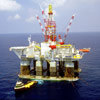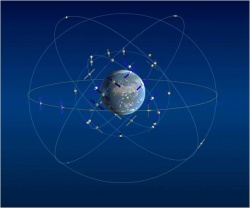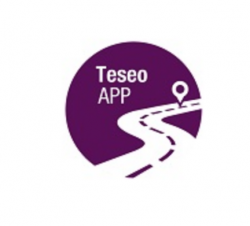
From the perspective of consumers, the yearlong rise in commodity prices — from oil and natural gas to corn and wheat — has clouded the economic outlook. But for producers, including many GNSS manufacturers and service providers, those clouds have silver linings.
Recent financial reports from companies active in agricultural and natural resource markets bear this out. GNSS products used to guide and control equipment are in heavy demand as are real-time differential correction services, particularly those using global satellite-based systems.
More acres are being planted in corn in response to a recent doubling of prices paid for the commodity grain, which not only is used to produce food products and sweetener (corn syrup) but increasingly provides a source for biofuels. Demand — and prices — is also growing for other crops, such as wheat and soybeans, that are typically grown in large units of land, making them candidates for the economies of scale augmented by GPS-aided site-specific farming.
Meanwhile, oil prices have more than quadrupled during the Bush administration — from $30 to more than $140 per barrel until dropping under $120 a barrel recently. That has led many of the world’s petroleum companies to plow windfall profits back into exploration activities and push for an opening up of ecologically sensitivity areas that are currently off limits. High prices at the pumps have help reverse U.S. public opinion on the subject and moved Democratic and Republican officials towards a bipartisan support for more off-shore drilling.
On August 20, for instance, Secretary of the Interior Dirk Kempthorne announced that the Western Gulf of Mexico Oil and Gas Lease Sale 207 conducted by the department’s Minerals Management Service attracted a total value of $607,134,968 from 423 bids on 319 tracts comprising over 1.8 million acres offshore Texas.
Meanwhile, the same shortages in petroleum-based products that is boosting demand for GNSS-aided extraction and exploration of oil and natural gas is driving up farmers’ costs for fuel, fertilizer, and pesticides. Regulation also is increasing, requiring growers to maintain accurate records of the types of chemicals used, as well as where and when they were applied.
These and other factors have combined for a benign perfect storm (from the perspective of GNSS product and service providers) in the marketplace.
In its FY08 second quarter report, for instance, Trimble said revenue for the company’s Field Solutions business unit — $90.1 million, up approximately 63 percent from the year-previous period — “was driven primarily by strong demand for agricultural products.” Operating income in Field Solutions was $34.8 million, or 38.6 percent of revenue compared to $18.4 million in Q2 2007.
Sunnyvale, California–based Trimble offers a variety of solutions for precision agriculture, machine guidance, and flow and application controls.
In Calgary, Alberta, Canada, Hemiphere GPS also announced strong growth, including a 59 percent increase in revenues to a second-quarter record of US$23 million. a substantial increase from revenues of $14.5 million in the second quarter of 2007. “Revenue growth continues to be driven by strong fundamentals in the agriculture market where record grain prices are resulting in higher farm incomes,” the company said.
Added President & CEO Steven Koles, “We have seen a significant increase in revenues since the North American harvest began in the third quarter of 2007, and the acceptance of GPS and auto-steering within precision agriculture is at an all time high.”
In December 2007, Hemisphere GPS acquired BEELINE Technologies, which provides hands-free auto-steering technology to farm equipment manufacturers such as AGCO Corporation.
In addition to automated driving systems such as its Outback Guidance S3 product, which the company began shipping at the end of March, Hemisphere GPS provides a range of GPS-aided aerial spray application products.
A similar story is told at Raven Industries, a manufacturer of GPS-controlled ag equipment guidance systems, spray equipment rate controllers, boom management and applications systems, and data management systems, based in Sioux Falls, South Dakota.
For the fiscal year 2008 ending last January, Raven’s Flow Controls Division (FCD) saw sales rise 41 percent over the previous year (up $18.8 million to $64.3 million) as operating income rose 89 percent.
The trend has continued in the first six months of the current fiscal year. Raven Industries’ overall sales were up 27 percent to $144.4 million, with FCD again contributing the largest portion of the company’s sales growth.
“While crop prices are down from the records we saw in the first quarter, they remain at very high levels,” said Ronald Moquist, Raven Industries’ CEO. “Growers are still facing rising input costs for items including fertilizer and fuel. As a result, leading growers in the U.S. and international markets are turning to precision agriculture products, which increase their crop yield while holding down expenses.”
Satellite-Based Differential GNSS
Since acquiring a leading competitor, Thales GeoSolutions (formerly Racal Survey), in 2003, The Netherlands-based Fugro N.V. survey and geotechnical services company has dominated the global GNSS differential corrections market. (The company acquired the U.S. offshore survey company John E. Chance & Associates, Inc. (offshore survey) in 2001.)
In the first half of 2008, Fugro’s total revenue grew by more than 20 percent to €992.9 million (US$1.47 billion), with earnings growing 27.2 percent to €109.3 million ($161.7 million). Its survey division, which includes OmniSTAR and Fugro SeaSTAR wide-area differential GPS services, saw revenue increase by 12.8 percent to €442 million (US$654 million). Fugro’s GNSS network includes more than 100 reference stations.
SeaSTAR addresses offshore dynamic positioning and marine applications. OmniSTAR focuses on on-shore application markets including agriculture, mining and survey, geographic information services, and construction. According to OmniSTAR sales manager John Pointon, the company’s ag-related business has grown rapidly in recent years as U.S. farmers rapidly bring more acreage under cultivation to take advantage of markedly stronger commodity prices.
Despite Fugro’s dominance in the field — representing perhaps 95 percent of the market a few years ago — the growing demand for GNSS differential services has encouraged other firms to expand their operations. One of these is Aberdeen, UK–based VERIPOS, a division of Subsea7, an underwater engineering and construction company.
The company started in 1989 as a joint venture of Brown & Root Survey and Ormtec to operate a land-based DGPS service in the North Sea. By 2001, VERIPOS had become completely owned by Halliburton Subsea, now Subsea7.
Since being established as a separate operational Subsea7 entity in 2005, the number of personnel dedicated the division have grown from 6 to 70 people, according to VERIPOS Managing Director Walter Steedman. Now the company has operations worldwide offering off-shore positioning services built around a network of 75 reference stations.
Steedman notes that hundreds of new vessels are being built to chase the new exploration opportunities. More than 90 percent of VERIPOS’s business comes from the offshore oil and gas business, including seismic surveys, construction, and dynamic positioning.
NavCom Technology straddles both sides of the commodities-driven boom: supplying GNSS technology to corporate parent John Deere Company, a leading provider of farm equipment, while operating the StarFire Network, a subscription service based on a global network of more than 60 GPS reference stations.
In 2005, NavCom extended an exclusive agreement with C&C Technologies to use its StarFire system for offshore operations for surveying, mapping, geophysics, mining, cable laying and offshore construction, installation, inspection, and maintenance operations. C&C Technologies, a deepwater survey and mapping company headquartered in Lafayette, Louisiana, offers StarFire-capable receivers under its C-Nav brand.
The company’s president, Thomas Chance, and vice-president, James Chance, founded C & C Technologies, Inc. in 1992 following the sale of their father’s company, John E. Chance and Associates to Fugro.
Earlier this year, NavCom released new software for its RTK and StarFire products, providing users access to an expanded StarFire Network of six satellites and NavCom’s new Ultra RTK capability to provide fully redundant global coverage and increased performance assurance.





